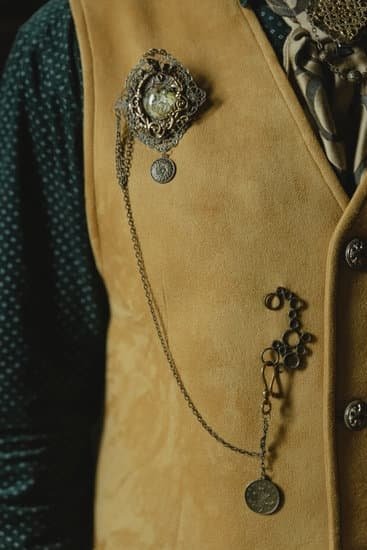Introduction
Marble-making is an art dating back centuries and continues to be popular today. It was traditionally used primarily to create sculptures and artwork, but recently it has grown in popularity as a jewelry-making material due to its unique beauty and bright colors. Marble jewelry comes in a variety of styles, shapes, sizes, and colors that can be customized according to the artist’s preferences. When selecting marble for use in jewelry-making projects it is important to consider the quality of the product; typically the brighter the color, the more expensive it is likely to be. Additionally, marble with more veiny patterns tend to be more rare and therefore cost more than those without them.
As for techniques used when making marble jewelry, one of the easiest methods is carving. Using basic hand tools such as chisels or files allows one to make intricate designs on their pieces. Additionally, drilling holes into marble with precision drill bits makes stringing them considerably easier. Cutting into pre-formed cabochons (semi-precious stones) to make pendants is also popular as well as polishing each piece with diamond paste or powder until they are gleaming works of art. With enough practice and dedication anyone can craft stunningly beautiful pieces out of raw marble that can then be sold online or at craft shows.
Tools Required
Tools needed to make marble jewelry include:
– Hammer
– Jewelers saw (or jigsaw with jeweler’s blade)
– Safety glasses and dust mask
– Wire cutters
– Needle nose pliers
– Sandpaper or polishing pads in grits ranging from 60 grit through 2000 grit
– Ruler or measuring tape
– Drilling bit/bits for the type of marble being used
– Dremel Tool
– Handles for the Dremel tool heads
– Beads, stones and findings appropriate for the project
– Strong adhesive (e.g., E6000)
Supplies and Materials – The list includes metal discs, rings and wire if desired to use in the jewelry making.
Supplies and materials needed to make marble jewelry include:
– Metal discs, rings and wire for linking/connecting elements together (optional)
– Marble pieces/slices in various shapes, sizes, thicknesses and colors
– Silver color or other metal head pins
– Silver jump rings in various sizes
Safety Precautions
When working with marble, it is important to take safety measures. Use protective eyewear and resistant gloves to ensure that small pieces of marble do not accidentally make contact with your eyes or skin. Additionally, don’t aim tools like hammers downwards in the direction of your body, as this can reduce the risk of an accident. When drilling or sawing the stone, make sure to secure it on a surface covered by fabric or other material to avoid any sharp edges. Place sand bags around the stone and use diamond drill bits for more precise measurements and fewer chips during shaping. Finally, always wear a dust mask when cutting or grinding marble as it produces fine dust particles which should not be inhaled directly.
Selecting Marble
When selecting marble for jewelry-making, it is important to consider a few key factors. Firstly, the grade of the marble. While it can be tempting to opt for the generic and cheapest marble available, due to the intricate nature of jewelry-making, higher grades tends to be more ideal. As higher grade pieces are usually less prone to cracking or chipping during the creation process. Secondly, take into account the color of your desired marble piece and compare it to what is available on the market. Due to its natural variation, many stone merchants will have plenty of varying colors and so you are sure to find one that suits your needs when it comes to matching the overall look of your jewelry design. Lastly, pay attention to size when selecting a piece of marble – both in terms of space constraints and what is appropriate for an average sized jewel piece! Additionally, if you require large quantities, shops often offer discounts on bulk purchases as well as mini size samples that may be suitable depending on the application. All these tips can help ensure you select the right grade, color and size of marble for your jewelry-making project!
Cutting & Shaping
When it comes to cutting and shaping marble jewelry, there are several techniques and tools that can be used. The most essential tool for cutting and shaping marble is diamond-tipped drills, as they offer the greatest precision and level of control when cutting or drilling into the stone. A rotary power tool is often used to drill into the marble with a controlled motion. This allows for a smooth cut line and eliminates chipping or roughening of the edges. For more intricate details or carvings, jewelers may use a pneumatic hammer that utilizes air pressure to create unique shapes without risking overcutting or damaging the surface of the marble.
In addition, moving sandblasting equipment is often used to engrave words or symbols onto the exterior of pieces made from soft stone like marble. Intricate patterns or designs can also be achieved by carving difficult stones like alabaster using small hand tools such as a chisel and mallet. Another option for creating detailed looks on hard materials is diamond grinding which uses powdered diamonds applied to the piece with a high-pressured air system allowing for sculpting accuracy and small detail work where needed.
Drilling & Attaching
Marble is a beautiful material to make jewelry out of, but it can be tricky to drill into due to its hardness. With the right tools and some patience, you can create stunning pieces of marble jewelry. Here’s how:
1. Use diamond-coated core bits and a rotary tool with a slow speed setting for drilling into marble. Mark the area you want to drill on the marble before starting.
2. Attach one end of the core bit into your rotary tool, then carefully lower it onto the marked spot. Start by making a shallow hole first and increase in depth as you go along for more control and accuracy. Be sure to keep your hand steady as you drill in order to avoid any chipping or breaking of the marble.
3. Secure findings such as jump rings, clasps and earring posts onto your piece of jewelry once the holes have been drilled with epoxy glue or E 6000 adhesive that’s designed specifically for hard materials like glass and metals such as silver or gold-filled ones. Allow enough time for the glue to dry completely before moving on to other steps.
4. Once everything is glued securely, use an electric buffing machine set at low speed to polish off any sharp edges and smooth out rough spots created while drilling into the stone surface, being careful not to over do it since this could lead to possible breakage due to heat buildup if you press too hard when buffing
Sealing
To properly seal marble jewelry and ensure its longevity, you must take the following steps. First, use a clean rag to wipe away any dust or debris that may have been accumulated on the surface of the marble. Once it is clear of any dirt, apply a thin but uniform layer of epoxy resin sealer to the entire piece with a foam brush. The sealer will dry fairly quickly and should be allowed to dry for at least two hours before being buffed to give it a professional finish. Once dry, sand down any visible ridges and smooth over any sharp edges or uneven surfaces with 400-grit sandpaper. Afterwards, use a fine-bristled brush or soft cloth to buff the jewelry until the desired finish is achieved. Finally, apply a thin layer of carnauba wax to protect and maintain the appearance of your marble jewelry.
Polishing & Finishing
The finishing process of marble jewelry begins by sanding the surface to remove any minor imperfections and prepare it for polishing. Sandpaper, abrasive pads, or grinding stones can all be used to give the stone a smooth, uniform finish. Care should be taken when selecting the sandpaper in order to avoid damage to the marble, as some types of sandpaper will scratch and wear down the material over time. Once sanding is complete, the next step is polishing. A polishing compound or paste can be used on a soft cloth or shoe brush to bring out the natural colors and luster of the marble. Most compounds require multiple applications and buffs with different grades of cloths before achieving a high-shine finish. For added shine and protection you can coat your marble jewelry with a microcrystalline wax or other sealant that will help prevent tarnishing and scratching. Keep in mind that all marble pieces will require slightly different finishing techniques depending on their shape and size, so experiment until you find a method that works best for your particular piece.
Creative Projects
Making marble jewelry requires a few simple steps and some supplies. Start by gathering the materials that you need; these may include: marbles, a hot glue gun, E-6000 glue, a needle nose pliers with cutting end, jump rings or connectors of your choosing, wire cutters, scissors, clear nail polish and if desired paint or markers to customize your piece. Begin by cutting the E-6000 glue into thin strips; this will form the base adhesive layer for your marbles. Place the glue on an object such as a board or stone so that it remains stable while constructing your marble jewelry piece. Once in place you can add the marbles one at a time pressing them down slightly to make sure they are securely adhered to the glue. After creating the desired pattern and shape of your jewelry move onto adding any connectors you’ve chosen between each marble using either the glue or jump rings depending on the needs of the connections you desire. To finish off your piece use a clear top coat like nail polish to protect it from chipping and wear over time. If desired also add any extra details to customize it by adding in color with paint pens or markers. When done follow normal cleaning instructions for all jewelry pieces before wearing and enjoy your creative creation!
Conclusion
Making marble jewelry is an enjoyable, creative project that anyone can do. All you need is a few supplies, some tools and a bit of imagination. With the right ingredients, you can create stunning pieces of jewelry with unique details and styles. Now that you have learned how to make marble jewelry, it’s time to get started with your very own design. Get inspired and express yourself through the beauty of marble!

Welcome to my jewelry blog! My name is Sarah and I am the owner of this blog.
I love making jewelry and sharing my creations with others.
So whether you’re someone who loves wearing jewelry yourself or simply enjoys learning about it, be sure to check out my blog for insightful posts on everything related to this exciting topic!





